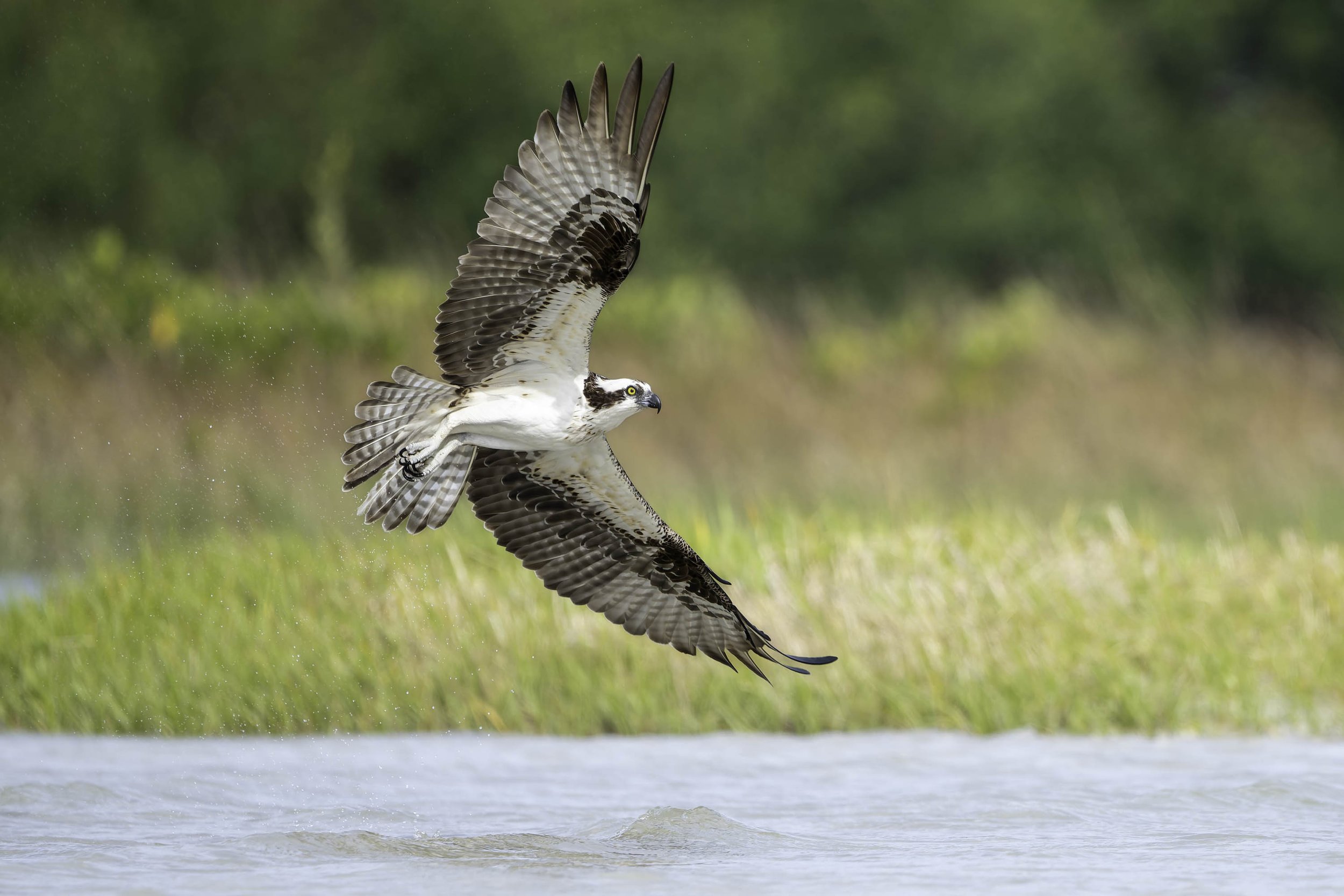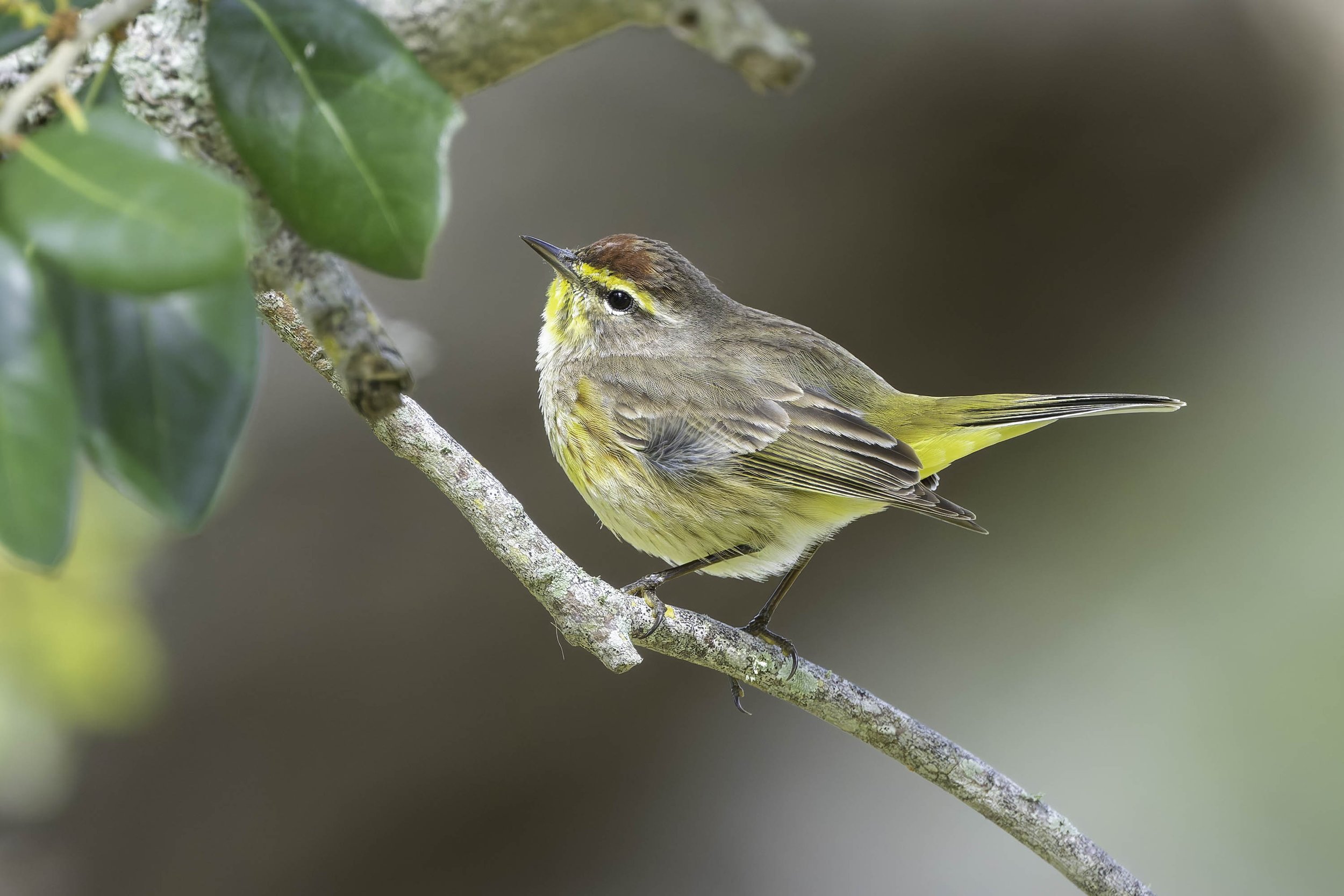Fort De Soto Trip Report, Sunday 23 Mar 2025
Sunday morning I arrived at Fort De Soto Park at 8 am with really nice conditions. I started at North Beach where the tide was low. Soon I came across the Snowy Egret and female Red-breasted Merganser that usually hunt with the Reddish Egret. On this day, however, the snowy and merganser were teamed up with a Brown Pelican. All three kept close together as they cooperatively hunted.
After I watched this unlikely trio for about 15 minutes, the Brown Pelican decided it was time to move on. I managed to get a few nice photos in a takeoff sequence as it headed out.
Brown Pelican. Nikon Z8 with Nikkor Z 180-600mm f/5.6-6.3 VR lens at 600mm, f/6.3, 1/1250 sec, ISO 320.
Snowy Egret. Nikon Z8 with Nikkor Z 180-600mm f/5.6-6.3 VR lens at 570mm, f/6.3, 1/3200 sec, ISO 640.
While photographing these birds, I ran into Will Laurie, a fellow Board of Directors member for the Tampa Audubon Society. We talked a bit when Will noticed this nearby Black-bellied Plover slowly and steadily pulling on a long worm.
Black-bellied Plover. Nikon Z8 with Nikkor Z 180-600mm f/5.6-6.3 VR lens at 600mm, f/6.3, 1/1000 sec, ISO 200.
Will and I parted ways and I decided to go find American Oystercatchers. I found a pair of American Oystercatchers resting on the beach near the water’s edge. This is arguably the most famous American Oystercatcher pair in the United States right now, and certainly in Florida. “AE”, named after her band code, and long-time partner “Archie” were relaxing on the beach together. A park ranger slowly drove his pickup truck nearby and this caused the birds to casually move out of the way. I managed to get a photo of AE walking. Thrilling, I know.
American Oystercatcher. “AE” on the left and “Archie” on the right. Nikon Z8 with Nikkor Z 180-600mm f/5.6-6.3 VR lens at 600mm, f/16, 1/1600 sec, ISO 2000.
American Oystercatcher. Nikon Z8 with Nikkor Z 180-600mm f/5.6-6.3 VR lens at 600mm, f/6.3, 1/1600 sec, ISO 280.
While photographing the oystercatchers, six or eight Brown Pelicans flew in and started diving on fish along the shoreline. I got lots of pics of them diving and coming up with pouches full of fish, but nothing stood out as special. I did have a pelican fly directly at me and I liked that point of view. Note that these birds are in exemplary breeding plumage right now.
Brown Pelican. Nikon Z8 with Nikkor Z 180-600mm f/5.6-6.3 VR lens at 500mm, f/6.3, 1/3200 sec, ISO 800.
I never saw the dark or white morph Reddish Egret, and it was kinda quiet up and down the beach. In my experience the birding is slower when the tide is out. It’s best at mid-tide.
I left the beach and changed lenses, opting for the 800mm f/6.3 lens. I walked over to a small cove accessible from the picnic area at North Beach just to see if there was anything over there. Luckily, I found a couple of Osprey in about a foot of water bathing. They would occasionally take off and fly around which made for some nice shots.
Osprey. Nikon Z8 with Nikkor Z 800mm f/6.3 VR S lens at f/6.3, 1/2500 sec, ISO 560.
Osprey. Nikon Z8 with Nikkor Z 800mm f/6.3 VR S lens at f/6.3, 1/3200 sec, ISO 560.
Osprey. Nikon Z8 with Nikkor Z 800mm f/6.3 VR S lens at f/6.3, 1/3200 sec, ISO 720.
While in this area I heard the very distinctive call of a Prairie Warbler nearby. The only angle I could get on the bird meant wading out into the water, so that’s what I did. There I found a single Prairie, mostly flitting about the mangroves in search of insects. Occasionally he would stop and sing, but he was moving pretty quickly, and I was trying not to sink too far in the mud or fall in and get my camera wet.
Prairie Warbler. Nikon Z8 with Nikkor Z 800mm f/6.3 VR S lens at f/6.3, 1/3200 sec, ISO 2200.
Seeing the Prairie got me excited that this might be an early sign of spring migration, so I headed down to East Beach. Hooded Warblers are often an early migrant and they tend to be at the East Beach area. When I arrived, I saw a few other photographers and birders already there. I found lots of Palm Warblers and Yellow-rumped Warblers, all looking really good right now. Mixed in was at least two Yellow-throated Warblers, Northern Parula, and White-eyed Vireo. Very exciting to see!
Palm Warbler. Nikon Z8 with Nikkor Z 800mm f/6.3 VR S lens at f/6.3, 1/2000 sec, ISO 1800.
Yellow-rumped Warbler. Both the yellow-rumps and palms were hunting for insects both on the ground and in the trees. Here, a yellow-rump managed to catch a big moth. A palm later came in and tried to steal it but the yellow-rump took off with it. Nikon Z8 with Nikkor Z 800mm f/6.3 VR S lens at f/6.3, 1/2500 sec, ISO 1250.
White-eyed Vireo. At first I mistook this bird for a Palm Warbler, but their distinctive high-pitched calls gave it away. Nikon Z8 with Nikkor Z 800mm f/6.3 VR S lens at f/6.3, 1/2500 sec, ISO 500.
Yellow-throated Warbler. Nikon Z8 with Nikkor Z 800mm f/6.3 VR S lens at f/6.3, 1/2500 sec, ISO 1250.
Northern Parula. The parulas were staying high in the trees and I never really got a good solid look. Most of the times they were blocked by leaves or branches as they searched for insects in the tree canopy. Nikon Z8 with Nikkor Z 800mm f/6.3 VR S lens at f/6.3, 1/2500 sec, ISO 900.
Continuing to look (unsuccessfully) for Hoodies, I came across this Eastern Phoebe. This bird was also feeding on moths and other insects on the ground, so it was perching low. I managed to get this one in some nice light.
Eastern Phoebe. Nikon Z8 with Nikkor Z 800mm f/6.3 VR S lens at f/6.3, 1/3200 sec, ISO 2200.
So that’s it from this trip to Fort De Soto. The Northern Parula and Prairie Warbler are early spring visitors, so the full force of spring migration will soon be upon us. I suspect I’ll be birding all day every weekend from now through the middle of May.
I don’t know yet where I am going next weekend. Circle B is looking good right now, and I’ve been seeing some interesting photos out of Joe Overstreet in recent days. Or I may stay local and do some rookery photography and return to De Soto. Lots of great options.
Happy birding!
















